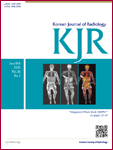
KOREAN JOURNAL OF RADIOLOGY
Scope & Guideline
Pioneering Research in Radiology and Nuclear Medicine
Introduction
Aims and Scopes
- Advanced Imaging Techniques:
The journal focuses on state-of-the-art imaging modalities such as MRI, CT, and ultrasound, exploring their applications in diagnosing various medical conditions. - Interventional Radiology:
Research on minimally invasive procedures, including ablation techniques and biopsy methods, is a significant area of interest, highlighting the evolving role of interventional radiology. - Artificial Intelligence in Radiology:
There is a strong emphasis on the integration of AI and machine learning technologies in radiology, assessing their impact on diagnostic accuracy and workflow efficiency. - Multidisciplinary Approaches to Cancer Management:
The journal often publishes guidelines and consensus statements on the radiological management of cancers, emphasizing collaborative efforts across specialties. - Quality Improvement and Patient Safety:
Articles focusing on improving radiological practices, patient safety measures, and the impact of quality improvement initiatives are regularly featured. - Radiomics and Biomarkers:
The exploration of radiomics and imaging biomarkers for predicting treatment outcomes and disease progression is a growing area of research.
Trending and Emerging
- Artificial Intelligence and Machine Learning:
There is a significant uptick in studies exploring AI and machine learning applications in radiology, focusing on diagnostic accuracy, workflow optimization, and predictive analytics. - Multidisciplinary Cancer Management:
Emerging themes include comprehensive guidelines and collaborative approaches for cancer management, integrating radiology with oncology and surgery. - Radiomics and Quantitative Imaging:
The trend towards radiomics is gaining momentum, with research focusing on extracting quantitative features from imaging data to improve prognostication and treatment planning. - Safety and Quality in Radiology:
There is an increasing emphasis on safety protocols, quality improvement initiatives, and patient-centered outcomes within the field of radiology. - Telemedicine and Remote Imaging Solutions:
The rise of telemedicine has led to an increase in studies addressing remote imaging solutions and the implications for patient care and access to radiological services. - Advanced Interventional Techniques:
Innovative interventional radiology techniques, including new ablation technologies and minimally invasive procedures, are becoming a prominent focus of research.
Declining or Waning
- Traditional Imaging Techniques:
There has been a noticeable decrease in papers focusing on conventional imaging methods without advanced enhancements, as the field increasingly leans towards hybrid and AI-assisted technologies. - General Radiology Practices:
Topics centered on general radiology practices and basic imaging protocols are becoming less common, as the journal pivots towards more specialized and cutting-edge research. - Non-Interventional Radiology:
Research that does not involve interventional procedures is declining, with a growing preference for studies that demonstrate practical applications of interventional radiology. - Basic Statistical Methods:
Papers emphasizing basic statistical analyses in imaging studies are becoming less frequent, as more sophisticated statistical methodologies and machine learning approaches gain traction. - Basic Case Reports:
The journal is seeing a reduction in the publication of straightforward case reports, moving towards more comprehensive studies that contribute significantly to the field.
Similar Journals
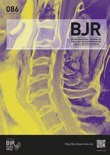
BRITISH JOURNAL OF RADIOLOGY
Pioneering Research for the Future of ImagingBritish Journal of Radiology is a leading peer-reviewed journal published by the British Institute of Radiology, dedicated to advancing the field of radiology, nuclear medicine, and imaging. With a prestigious history dating back to 1945, this journal is at the forefront of disseminating cutting-edge research and innovations that significantly impact clinical practice. Currently enjoying a Q1 ranking in the field of radiology and Q2 in general medicine for 2023, it is recognized for its rigorous standards and high-quality content, ranking #87 out of 333 in Scopus for specialties related to Medicine, Radiology, Nuclear Medicine, and Imaging, placing it in the 74th percentile. Researchers, professionals, and students are encouraged to engage with the latest findings and comprehensive reviews presented within its pages, which contribute not only to academic discourse but also to the evolution of practice in the wider medical community.
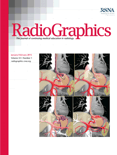
RADIOGRAPHICS
Advancing Imaging Science for Tomorrow's HealthcareRADIOGRAPHICS, published by the Radiological Society of North America (RSNA), is a premier academic journal dedicated to the field of radiology, nuclear medicine, and imaging. With an impressive impact factor and recognition in the top quartile (Q1) of both Medicine (miscellaneous) and Radiology, Nuclear Medicine and Imaging categories, RADIOGRAPHICS stands out as a leading platform for disseminating high-quality research and clinical findings. Since its inception in 1985 and projected to run until 2024, the journal has consistently provided essential insights into cutting-edge imaging techniques and advancements in radiological practices, making it invaluable for professionals, researchers, and students alike. Although it does not offer open access, the journal continues to flourish with a robust reputation, ranked 35th in its field according to Scopus, placing it within the 89th percentile of its category. With an unwavering commitment to enhancing the understanding and application of radiological sciences, RADIOGRAPHICS remains a pivotal resource for advancing knowledge and expertise within the medical community.
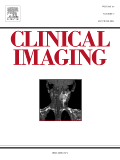
Clinical Imaging
Empowering Insights in Nuclear Medicine and ImagingClinical Imaging, published by Elsevier Science Inc, is a renowned journal dedicated to the field of radiology, nuclear medicine, and imaging. With an ISSN of 0899-7071 and an E-ISSN of 1873-4499, this esteemed publication has established its significance in advancing imaging science since its inception in 1989 and continues to make impactful contributions to the discipline through 2024. The journal holds a prestigious Q2 ranking in the category of Radiology, Nuclear Medicine, and Imaging, reflecting its critical role in bridging research and clinical practice. Currently ranked #113 out of 333 by Scopus, with a notable 66th percentile, it offers a platform for disseminating high-quality research, reviews, and case studies that inspire innovation and enhance imaging techniques. Although it primarily functions as a subscription-based journal, it remains dedicated to accessibility and the dissemination of pivotal findings that inform both academia and clinical settings. Clinical Imaging is essential for researchers, professionals, and students alike, offering insights that shape the future of diagnostic imaging.

Radiologie
Elevating Clinical Practice with Radiological InsightsRadiologie, published by SPRINGER HEIDELBERG, is an emerging journal dedicated to the fields of radiology, nuclear medicine, and imaging. With an ISSN of 2731-7048 and E-ISSN 2731-7056, this journal does not currently offer open access, providing a traditional yet respected platform for scholarly communication. Founded in 2022, it aims to advance the understanding of cutting-edge imaging techniques and their applications in clinical practice, contributing to improvements in diagnostic accuracy and patient care. Despite its recent establishment, Radiologie is positioned within the Q4 quartile category, reflecting its developing presence in the academic landscape, with a current Scopus rank of #231 out of 333 in its category. The journal serves as a vital resource for researchers, professionals, and students seeking to stay abreast of the latest developments in radiological science, imaging technology, and their clinical implications, ensuring ongoing engagement and advancement in this critical area of healthcare.

European Journal of Radiology Open
Advancing Knowledge in Medical Imaging and Nuclear MedicineThe European Journal of Radiology Open, published by Elsevier, has established itself as a pivotal platform for disseminating high-quality research in the field of radiology, nuclear medicine, and imaging since its inception in 2014. This open access journal, holding a commendable Q2 ranking in the esteemed 2023 Scopus categorization, seeks to foster a collaborative environment where researchers, professionals, and students can share innovative findings and advancements. Operating under the E-ISSN 2352-0477, this journal contributes to the broader scientific discourse with a commitment to accessibility and transparency, ensuring that cutting-edge research is available to a global audience. The journal's dual focus on rigorous peer review and rapid publication processes underscores its importance within the academic community, aiming to empower professionals with the latest insights in the dynamic landscape of medical imaging.

AMERICAN JOURNAL OF ROENTGENOLOGY
Exploring New Frontiers in Imaging Technology.AMERICAN JOURNAL OF ROENTGENOLOGY (AJR), published by the American Roentgen Ray Society, stands as a beacon of excellence in the fields of Radiology, Nuclear Medicine, and Imaging. With an impressive impact factor positioning it in the Q1 category of both Medicine (Miscellaneous) and Radiology as of 2023, AJR is ranked 13th out of 333 journals in its category, reflecting its prominent presence and high relevance in advancing medical imaging knowledge and practice. Established in 1973 and continuing through to 2024, the journal encompasses a broad spectrum of research, critical reviews, and innovative techniques, making it a vital resource for researchers, healthcare professionals, and students alike. Although it does not currently offer open access options, AJR ensures that its rigorous, peer-reviewed content remains accessible to a global audience committed to the evolution of radiological science. With its home base in Leesburg, Virginia, AJR not only informs but also inspires advancements in radiology, enhancing diagnostic practices and patient care globally.

Japanese Journal of Radiology
Exploring Innovations in Imaging and Nuclear MedicineThe Japanese Journal of Radiology, published by SPRINGER, serves as a premier platform for disseminating cutting-edge research and clinical advancements in the fields of radiology, nuclear medicine, and imaging. With an ISSN of 1867-1071 and E-ISSN 1867-108X, this journal has established itself as a vital resource for practitioners, researchers, and students alike. Renowned for its high-quality peer-reviewed articles, it currently enjoys a respectable impact factor within the Q2 category of Scopus rankings, placing it in the 69th percentile among 333 journals in its field. The journal has seen consistent convergence of research from 2009 to 2024, further underscoring its commitment to advancing the understanding of radiological practices. Importantly, the journal offers Open Access options to facilitate widespread dissemination of knowledge, ensuring that vital research reaches its audience without barriers. Addressed in Japan, the Japanese Journal of Radiology plays a critical role in enhancing the global discourse on medical imaging, making it an essential resource for anyone engaged in this dynamic field.
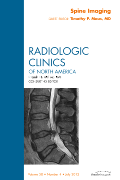
RADIOLOGIC CLINICS OF NORTH AMERICA
Exploring Innovations in Imaging and Nuclear Medicine.Radiologic Clinics of North America, published by W B Saunders Co-Elsevier Inc, stands as a pivotal resource in the field of medical imaging and radiology. With a solid history dating back to 1963 and converging years extending to 2024, this journal has established itself as a reputable platform for original research, comprehensive reviews, and insightful discussions that advance the knowledge and practice of radiology, nuclear medicine, and imaging. Holding a Q2 classification in both the miscellaneous medicine and radiology categories and positioned within the 56th percentile among its peers, its contributions are vital for both academic research and clinical applications. Although it does not offer open access, the journal remains accessible through institutional subscriptions and is a must-read for researchers, healthcare professionals, and students keen on the latest developments in radiological practices. With a dedicated editorial board and a commitment to the highest academic standards, Radiologic Clinics of North America continues to shape the future of the medical imaging field.
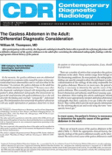
Contemporary Diagnostic Radiology
Unveiling New Horizons in Medical ImagingContemporary Diagnostic Radiology is a pivotal journal in the field of medical imaging and radiology, published by Lippincott Williams & Wilkins. With an ISSN of 0149-9009 and an E-ISSN of 1938-1395, this journal serves as an essential platform for disseminating high-quality research and advances in diagnostic radiology and related disciplines. While it is categorized in the lower quartiles (Q4) for its performance in the 2023 rankings in both Neurology, Radiology, Nuclear Medicine and Imaging, and Surgery, its focus on emerging technologies and methodologies in imaging continues to provide valuable insights for practitioners and researchers alike. The journal’s scope includes innovative diagnostic tools, imaging techniques, and case studies, fostering collaboration and knowledge sharing in the medical community. Although it does not offer open access options, its commitment to contributing to the ongoing dialogue in clinical imaging is undisputed, making it an essential resource for professionals seeking to stay abreast of current trends and research in the rapidly evolving landscape of diagnostic radiology.

Iranian Journal of Radiology
Commitment to Excellence in Diagnostic Imaging ResearchWelcome to the Iranian Journal of Radiology, a pivotal platform dedicated to advancing the field of radiology, nuclear medicine, and medical imaging. Published by BRIEFLAND, this journal aims to disseminate high-quality original research, reviews, and clinical studies that contribute substantially to the global scientific community. Established in 2008 and spanning until 2024, the journal provides an essential archive of knowledge in a rapidly evolving discipline. Although it currently holds a Q4 quartile ranking in the 2023 Scopus metrics, it serves as an important resource for both emerging and established researchers looking to submit their work. Located in the Netherlands, the journal is committed to open dialogue and collaboration amongst professionals in the field, reflecting its accessibility and relevance to both practitioners and academics. With its continued growth and commitment to quality, the Iranian Journal of Radiology is poised to enhance understanding and innovation in diagnostic imaging.